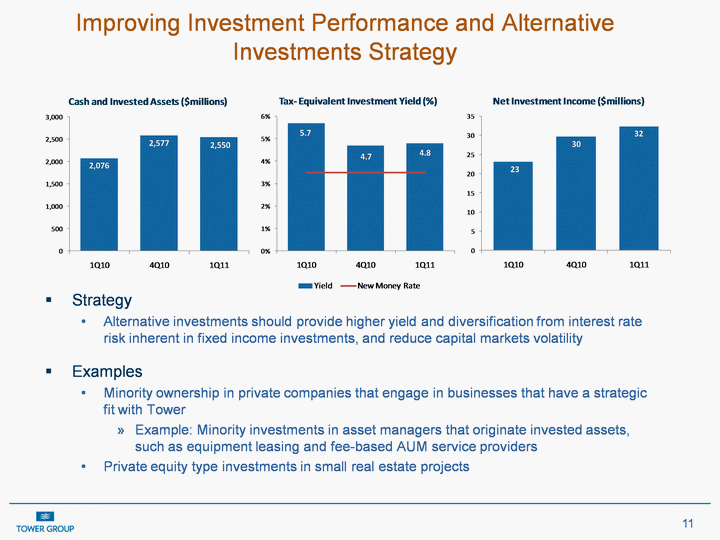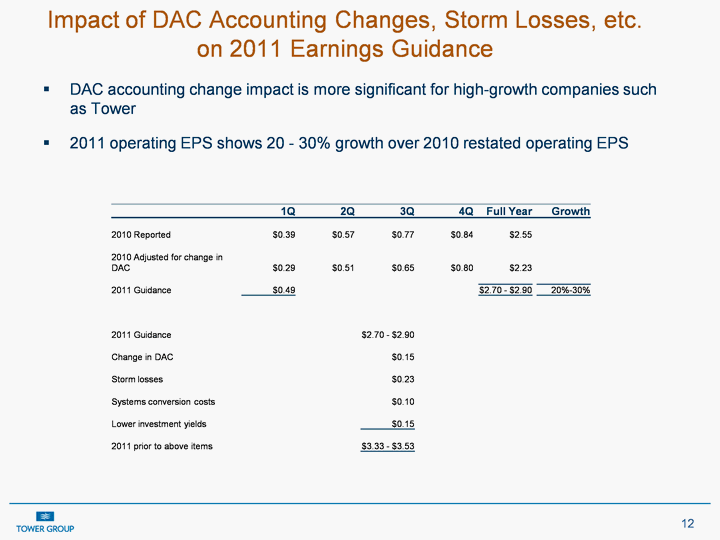Free signup for more
- Track your favorite companies
- Receive email alerts for new filings
- Personalized dashboard of news and more
- Access all data and search results
Filing tables
TWGP similar filings
- 8 Aug 11 Tower Group Reports Second Quarter Operating Earnings per Diluted Share of $0.63
- 16 May 11 Regulation FD Disclosure
- 11 May 11 Regulation FD Disclosure
- 10 May 11 Regulation FD Disclosure
- 9 May 11 Tower Group, Inc. Reports First Quarter 2011 Results; Quarterly Dividend Increased by 50% to $0.1875 Per Share
- 6 May 11 Submission of Matters to a Vote of Security Holders
- 7 Mar 11 Tower Group, Inc. Announces Stock Repurchase Program
Filing view
External links













